Are you starting to think about making an alternative house from containers and buying container homes for sale? If so, you’ve come to the right place!
Today, many people use containers and modify them as a place to live. Container homes can still highlight the style of your dream home without having to dig deep into your pockets. Like houses in general, you can modify your container homes by adding various tools such as doors, windows, and furniture.
However, before planning for the design, you have to know the right container type and size for your house. This article will discuss the types of containers along with references to their right sizes as the foundation of your house. Read until the end!
What is A Container Home?
As we know, shipping containers are large, steel boxes that are designed to transport goods via ships, trucks, and trains. Shipping containers can be converted into various useful spaces, including bedrooms, living rooms, kitchens, and more.
When repurposed for residential use, they are modified and converted into functional living spaces. A container home is a type of house made using one or more shipping containers as the primary structural component.
It does not only provide financial benefits because the construction costs are more affordable than traditional houses. It also provides the design and structure of the materials that can last a long time.
Container Homes Needs
Container homes have become increasingly popular in the U.S. due to their affordability, sustainability, and flexibility. The demand for container houses comes from a combination of affordability, environmental concerns, and a desire for alternative housing solutions. As the popularity grows, more areas will likely adapt to support container home development.
The rising cost of traditional housing and the need for budget-friendly options have driven interest in container homes. They are often much cheaper to build than conventional houses. Using shipping containers also helps reduce waste and repurpose materials that would otherwise be discarded.
The popularity of container homes can be limited in some states due to zoning restrictions and building codes. However, the trend grows, and states and municipalities have adapted their regulations to accommodate alternative housing solutions like container homes.
6 Container Types Suitable for Conversion Into Homes
Dry Container
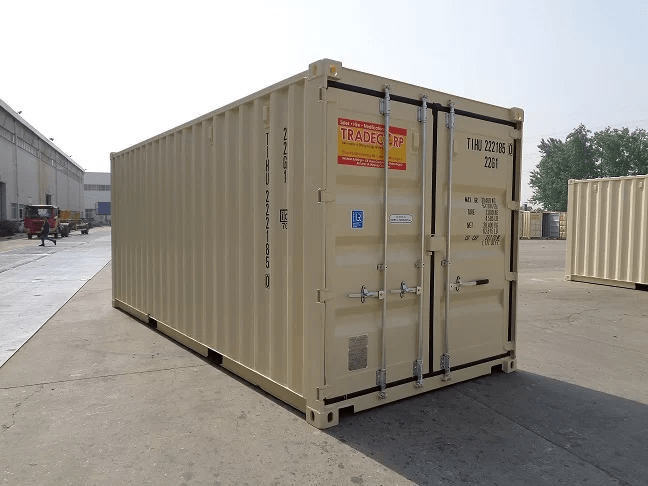
The first example of easy-modified container homes for sale on this list is the Dry Container. It is one of the most commonly used for shipping all types of general cargo whose basic materials are dry. Its manufacture has been standardized by ISO and is made from steel, which makes them highly durable.
Dry containers are indeed a good option for conversion into homes. They are one of the most common types used for container home construction. This container type provides a sturdy and cost-effective base that you can customize as a functional and eco-friendly living space.
Dry containers can withstand rough conditions during shipping. Therefore, they are built to be strong and resilient against weather, natural disasters (like storms or earthquakes), and pests. The steel structure protects from termites and other pests, unlike wood-based homes. They are also more fire-resistant.
Proper insulation, ventilation, and maintenance will ensure that your container home is comfortable and durable.
Flat Rack Container
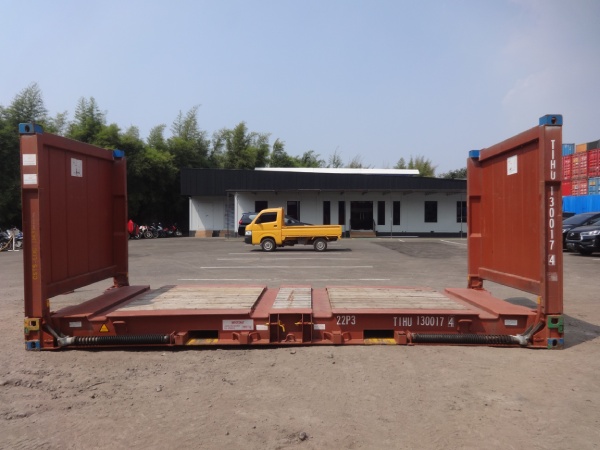
You can convert flat rack containers into a house, though it comes with some challenges compared to traditional shipping containers. A flat rack is a platform container without walls or a roof, typically used for transporting heavy or oversized cargo.
It means you would need to add walls and a roof to create a properly enclosed living space. This requires additional materials and structural work to make it weather-resistant and secure.
You will also need to add walls, a roof, insulation, and other features to make it functional as a livable space. The conversion process will be more complex, but it could result in a unique and customizable living space.
With some creative planning and modifications, it is possible to transform flat racks into an interesting and sustainable livable structure. However, it requires additional construction and creative work compared to converting a standard shipping container.
Open Top Container
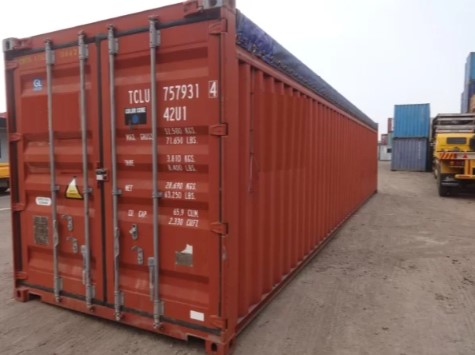
Open-top containers are similar to regular shipping containers but have a removable or fixed tarp roof (or sometimes no roof). While this offers certain challenges, it also presents an opportunity for creating unique, flexible living spaces.
Since open-top containers don’t have a solid roof, you’ll need to build a permanent roof to protect against extreme weather. This could involve constructing a traditional pitched roof or using metal roofing panels, which would ensure the home is weatherproof.
With the option to install larger windows, skylights, or even openable panels, open-top containers provide more opportunities for natural light and air circulation. This is often an advantage over traditional closed containers, which may require more extensive modifications for airflow.
Tunnel Container
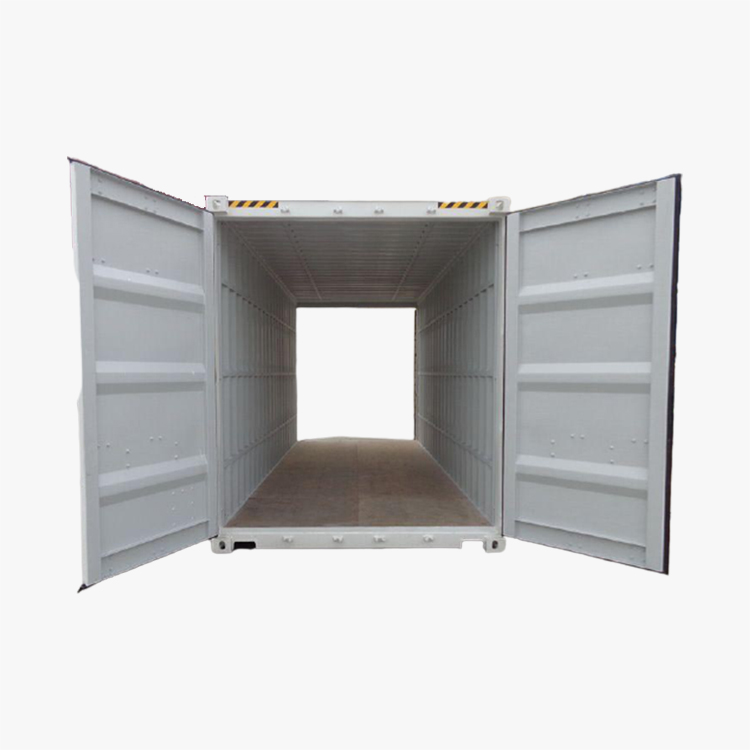
Tunnel containers are essentially double-ended containers with openings at both ends, which provides flexibility in terms of access and design. They have the advantage of a more open layout compared to standard containers, allowing for creative design opportunities when converting them into a livable space.
A tunnel container can be an excellent option for conversion into a house, offering more flexibility and room for creativity than standard containers. Since tunnel containers have doors at both ends, this can make the space feel more open and allow for better flow between rooms or sections of the home. With two existing entry points, you won’t need to cut additional doors or windows, saving you time and effort in modifying the container.
With proper reinforcement, insulation, and weatherproofing, a tunnel container can make a unique, affordable, and sustainable home. Just be sure to address any structural or zoning challenges before beginning the conversion process.
Open Side Container
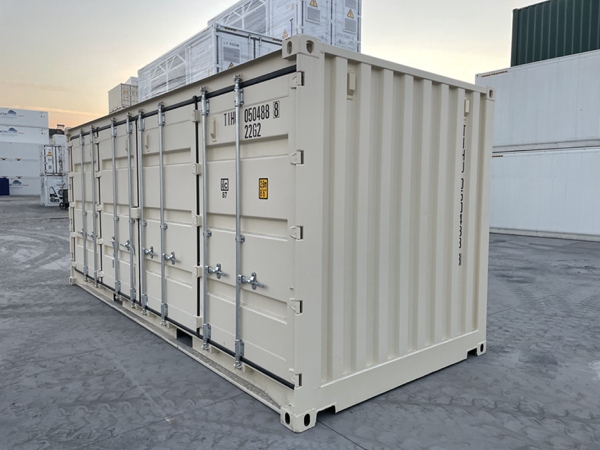
An open-side container is a great option for conversion into a home, offering wide access, natural light, and a flexible design. It offers several unique advantages compared to regular shipping containers.
This container type has a set of foldable doors on one or both sides, which allows for an expanded open space and greater flexibility in how you design the interior. It will also create an open, airy living space with excellent indoor-outdoor flow, especially if you want to make use of the open side for a porch, patio, or large windows.
This can be very beneficial when converting it into a house. By reinforcing the structure, adding insulation, and securing the openings, an open-side container can be transformed into a unique, comfortable, and affordable home.
However, since the container is open on one side, you will need to protect the interior from the elements. If you plan on using the open side as a porch or large window, you might need to build a roof extension to shield it from rain or snow. You will also need to make sure that the open side is sealed properly when closed to prevent water leaks during bad weather.
Double Doors Container
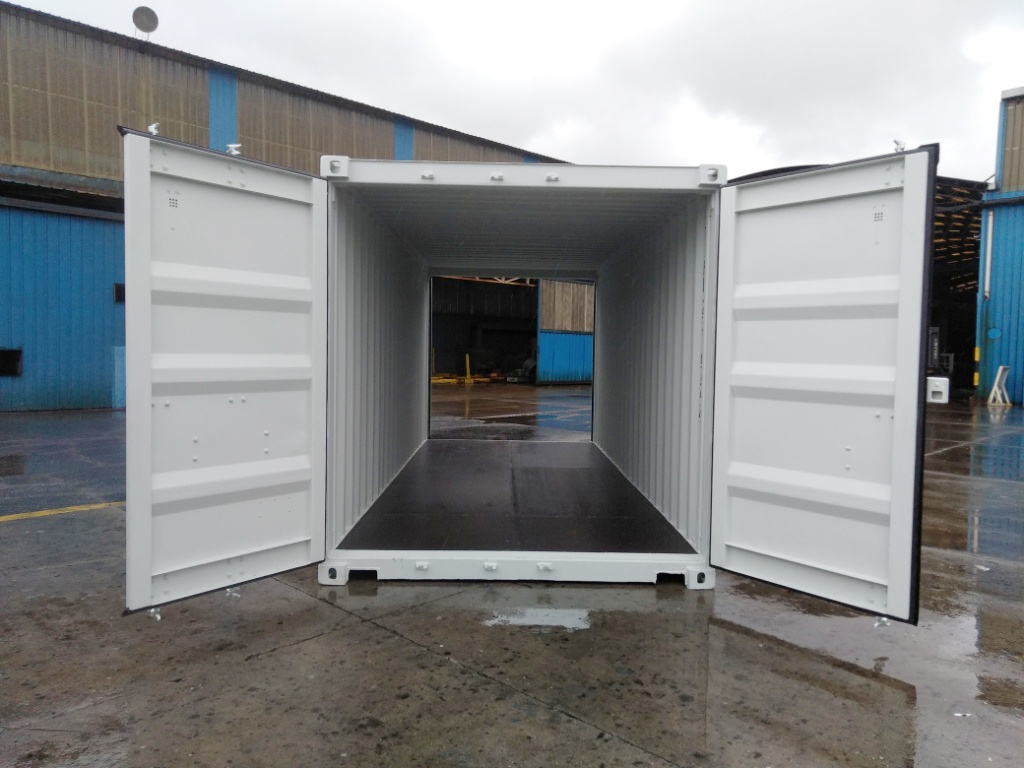
Containers with double doors (at both ends) provide unique opportunities for creating a functional, spacious, and flexible living space. This type of container is similar to a regular shipping container but with two wide access points that allow for better flow and ventilation.
The double doors at both ends make it easier to access the container and create a more open and flexible layout. You do not have to worry about cutting new doors, which can save you time and effort during the conversion process. These doors also make it easier to connect the container to other containers or the surrounding space if you plan to link multiple containers for a larger home.
The two entry points allow for greater natural light and better ventilation. With proper weatherproofing, insulation, structural reinforcement, and design planning, a double-door container can be transformed into a stylish, functional, and affordable home.
The appearance of the double doors can also contribute to a more inviting look compared to a single-entry container, and it can be used as a unique design feature in your home. The layout can be more open, and the structure can feel less confined than a traditional container with only one entry point.
However, with two open access points, it is important to weatherproof the container effectively. This means sealing the doors with proper gaskets, adding storm doors, or installing roof extensions to keep the interior dry during rain or snow.
Conclusion
Shipping containers are large, reusable metal boxes that are typically used to transport goods. These containers are typically made of steel and are designed to be durable, weather-resistant, and stackable. When converted into homes, they offer a unique, modern, and sustainable housing option.
You can find the 6 types of container homes for sale above at Tradecorp. Each container homes for sale unit can be used as a house at the project site and is portable so you can move them from one location to another. Tradecorp also offers you a wide range of house customization like additional doors, windows, insulation, and electrical systems. We will help you find the perfect container solution for your housing needs at a reasonable price. Fill out the contact form on our page to get container homes for sale at Tradecorp. We will respond to your inquiry promptly.

